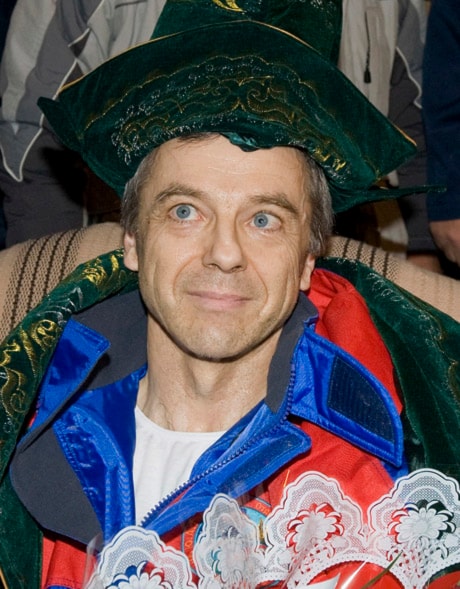A record-setting Canadian astronaut slept like a baby in the back of a heavy utility vehicle during his first few hours back on Earth, after returning Tuesday from a six-month stay aboard the International Space Station.
Bob Thirsk and two crewmates rumbled slowly along the barren terrain of northern Kazakhstan after their spacecraft landed upright in a field of knee-high brown grass about 80 kilometres from the town of Arkalyk.
Icy conditions in the region meant that even after the longest-ever space mission by a Canadian, Thirsk would have to wait a little longer to be reunited with his wife and family who were waiting to greet him in Moscow.
Helicopters that were supposed to carry recovery teams to the landing site were grounded because of low cloud cover and icy conditions.
Instead of an airlift, Thirsk had wait for several heavy-duty vehicles to reach him over rocky ground.
Dr. Jean-Marc Comtois, chief of the Canadian Astronaut Office, said when he arrived, the 56-year-old spaceman was already out of his space capsule.
Thirsk told him everything went well during re-entry, which also returned Russian cosmonaut Roman Romanenko and Belgian Frank De Winne. They had spent six months together, up in the giant orbiting space lab.
Comtois said Thirsk had a chance to talk with his wife by satellite phone.
“I remember the smile when he was excited about going into space. During the whole space mission he had a smile from ear to ear — and today that didn’t change,” Comtois said. “I think it was even more pronounced when he was talking to his wife. It was a very touching moment.”
Comtois said it will take a number of weeks back on Earth before Thirsk gets used to gravity again.
“His strength will be recovered over the next three weeks and probably in 21 days he’ll be able to return to the activities of normal living,” Comtois added.
The CSA official said it may also take six months to one year before Thirsk’s bone mass is back to normal.
Benoit Marcotte, director-general of the Canadian Space Agency, says every astronaut who goes to space has to pay that price.
“He (Thirsk) now has to relearn how to walk on the ground and rebuild the strength of his legs in order to get back to normal,” Marcotte told reporters at the Canadian Space Agency.
Thirsk’s mission marked a pair of firsts: not only was it the longest-ever space stay for a Canadian, but it also marked the first time two Canadians had ever crossed paths in the cosmos.
Thirsk actually accomplished the latter feat twice during his extended stay in space. He was visited by fellow astronaut Julie Payette in mid-July and, in October, he got another visit from Canada’s first space tourist, Cirque du soleil founder Guy Laliberte.
Thirsk is expected to spend at least one week in Moscow before flying back to his home in Houston. Marcotte added that the Canadian astronaut will not be back in this country before the New Year.
Steve MacLean, head of the Canadian Space Agency, calls Thirsk’s mission to the space outpost a turning point. During his mission, Thirsk conducted science experiments on plants and liquids and also worked to expand the station.
“Now we’re going to use this space station to do the science that we want to do,” MacLean told reporters during a telephone call.
“The (space) agencies of the world are negotiating what we are going to do next.”
MacLean, who watched the landing from mission control just outside Moscow, also said more Canadian astronauts will be spacebound in the future.
“You can expect a few missions for Canada in the next few years.”
MacLean praised Thirsk, saying “he executed his job with superb precision every single one of his 187 days in the space station.”
A native of New Westminster, B.C., Thirsk celebrated his 56th birthday on the space station on Aug. 17.
It was probably the last trip into the cosmos for the veteran astronaut, who was one of the original six chosen for Canada’s astronaut program in 1983 and who had his first space mission a decade ago. He has said it’s time to make room for Canada’s newest astronauts.
Thirsk won praise Tuesday from an old colleague. Marc Garneau, Canada’s first astronaut, issued a statement saluting Thirsk.
“His combined career total of 206 days in space surpasses the total number of days spent in space by all other Canadian astronauts combined,” Garneau, now a federal Liberal MP, said in a statement.
“Robert Thirsk is a modern Canadian explorer. His drive and determination to expand our knowledge about ourselves and our universe make him an inspiration and role model for all Canadians.”
When Thirsk arrived at the Station with his colleagues, it marked the first time all five of the international partner agencies — NASA, Russia’s Roscosmos, the Japan Aerospace Exploration Agency, the European Space Agency and the Canadian Space Agency — were represented in orbit together.
With the U.S. shuttle fleet set to be grounded in 2010, NASA and other international partners will have to rely on Russian Soyuz spacecraft, like the one Thirsk used, to ferry their astronauts to the space station and back.
